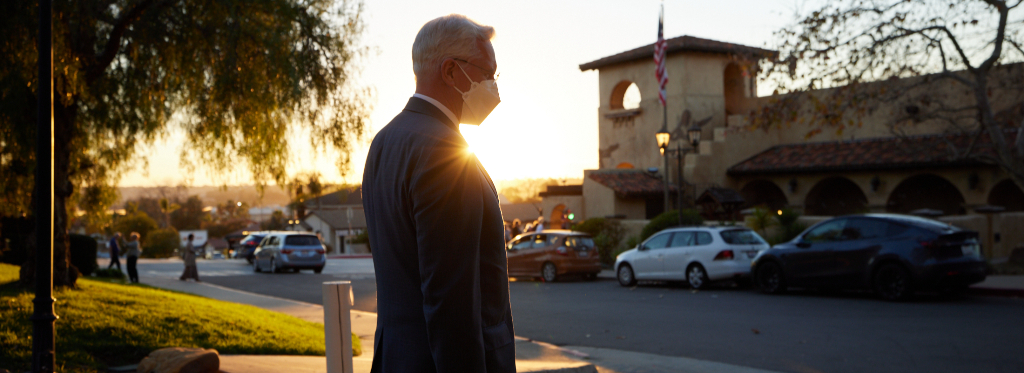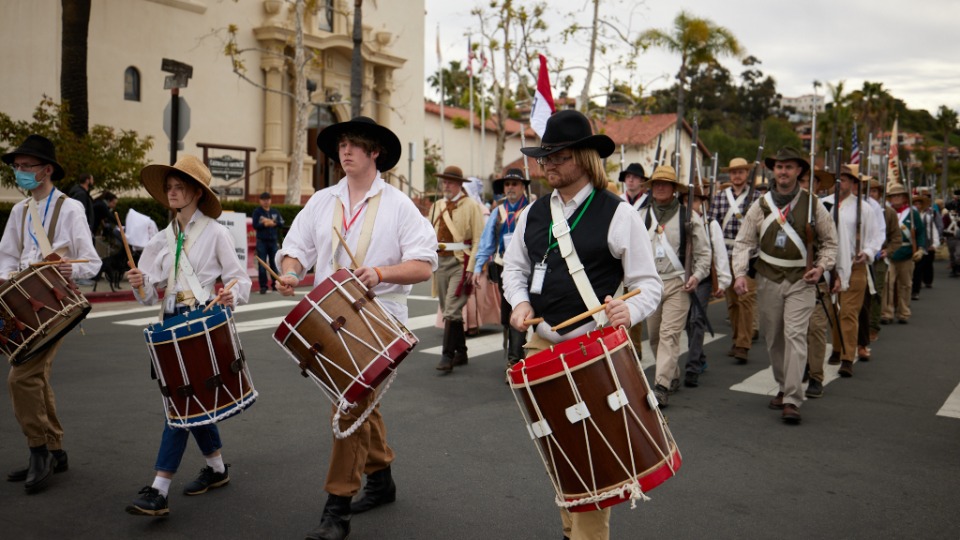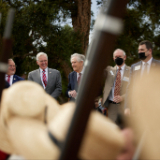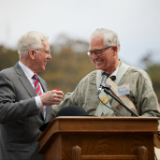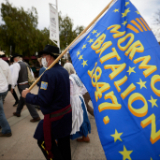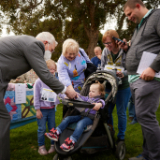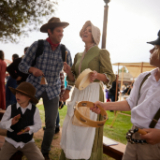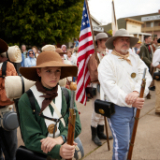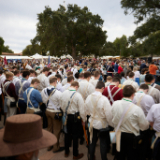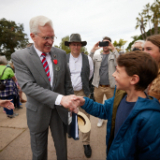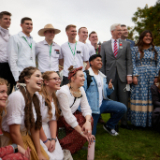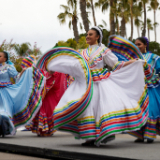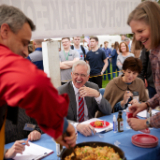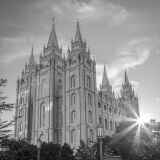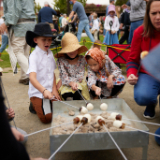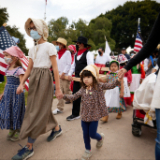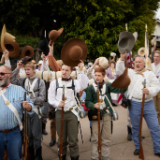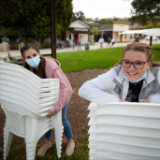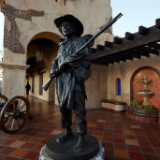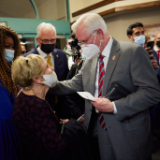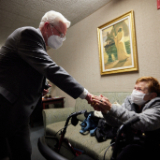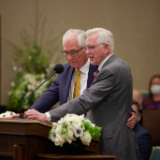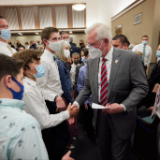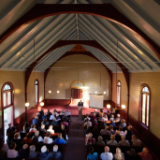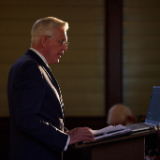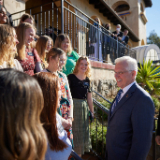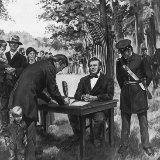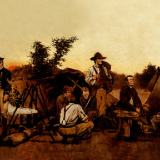After Latter-day Saints were forced out of Nauvoo, Illinois, in 1846, they struggled to finance the migration west.
A combination of factors, including a Church leader’s influence in the eastern United States and the country’s declaration of war against Mexico, led to the U.S. army’s recruitment of 500 Latter-day Saints to help fight in the American Southwest.
Brigham Young and other Church leaders accepted the invitation, knowing that the soldiers’ pay would be a boon to the migrating members. What became known as the Mormon Battalion left from Fort Leavenworth in Kansas Territory in July 1846. After a march of nearly 2,000 miles — one of the longest marches in American military history — they arrived in San Diego, California, on January 29, 1847.
| Temple Square is always beautiful in the springtime. Gardeners work to prepare the ground for General Conference. 2012 Intellectual Reserve, Inc. All rights reserved. | 1 / 31 |
On the 175th anniversary of the battalion’s arrival, Elder D. Todd Christofferson was at Old Town San Diego State Historic Park to honor these important figures in the Church’s history.
The Mormon Battalion is “a very apt example of doing hard things and doing them well,” the Apostle said. “They had challenges that we can barely comprehend — physical challenges and some spiritual, I’m sure. But they handled them. They didn’t complain. They went to work. And to me that’s something we need very much in this day and time. We need to work through a lot of things. Each one has his or her own challenges and opportunities to face. But they did. Theirs were mostly physical, overcoming a wilderness and carving a road out of the wilderness. But they didn’t give up. They didn’t stop. They found a way.”
Elder Christofferson, whose brother Greg is president of the Mormon Battalion Association, praised battalion members for their faith.
“We can’t really accomplish much without faith,” the Church leader said. “We wouldn’t act at all without some degree of faith. The deeper our faith, the more we can achieve on the basis of that faith. To me, it’s an interesting thing that it takes faith to begin to do something. But when you do act on faith, it increases the faith. So, it’s a wonderful virtuous, upward cycle. Faith leads to work, which leads to greater faith and greater works and so on. It’s just the way life ought to be. I salute them, the members of the Mormon Battalion, for a tremendous model of faith-filled and faith-based action.”
Other dignitaries present Saturday shared important lessons that the Mormon Battalion can teach us.
“I just can’t imagine marching all that way, leaving their families, wives and children, and then taking this horrendous march, and President Young giving them a blessing and sending them on their way,” said J. Clifford Wallace, a Latter-day Saint and senior judge on the 9th U.S. Circuit Court of Appeals. “It indicates the kind of courage we should have today, that we aren’t lost if we understand where we should look for truth and then fulfill it and not be hesitant and not worry about how difficult it is — but how important it is.”
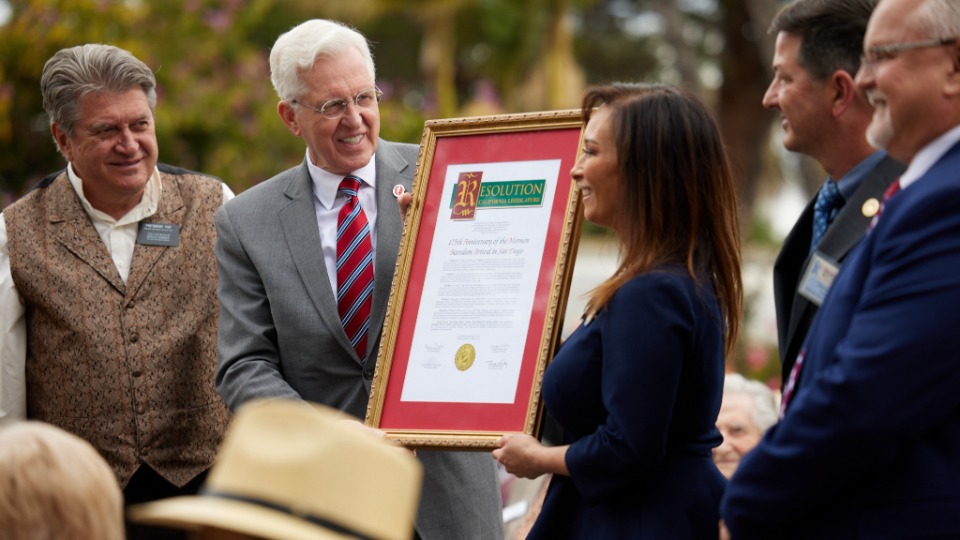
20220129_122914_CBell_CMB_4443.jpg
Rosilicie Ochoa Bogh of the California State Senate 23rd District and Latter-day Saint (third from left) presents Elder D. Todd Christofferson of the Quorum of the Twelve Apostles with a resolution to honor the 175th anniversary of the arrival of the Mormon Battalion in San Diego, California, on Saturday, January 29, 2022. 2022 by Intellectual Reserve, Inc. All rights reserved.Rosilicie Ochoa Bogh, a member of the Church and the California State Senate, said the story of the Mormon Battalion is a part of the “tapestry of different cultures” that makes California great.
“We need to embrace and learn from each other and really appreciate what every culture and every group has to offer,” Bogh said. “When I think of pioneers, I think of innovation, of having that courage and having that vision and moving forward and not having any fear. To have that courage to say it’s okay to come into new ground and explore new ideas and try to see how we can actually bring them together to promote the values that I think are overall a well-being for families and communities. Whenever we work together and we promote the values that we as a Church believe in, we create stronger families, stronger communities, a stronger state and a stronger nation.”
Barbara McKinney, the widow of the late Bishop George Dallas McKinney of the nearby Church of God in Christ, said coming together in such events is critical to build lasting community.
It is helpful “just to be a part of what each other does,” McKinney said. “It was a joy today to be a part of memorializing this wonderful event that I didn’t know about, that the Mormon Battalion came here 175 years ago, even before it was the state of California. It was just a great opportunity to be here.”
Speech to the Oregon-California Trails Association
In addition to attending the celebration on Saturday afternoon and speaking to Latter-day Saints on Saturday night and missionaries on Sunday morning, Elder Christofferson gave a 45-minute address to the Oregon-California Trails Association symposium on Friday afternoon.
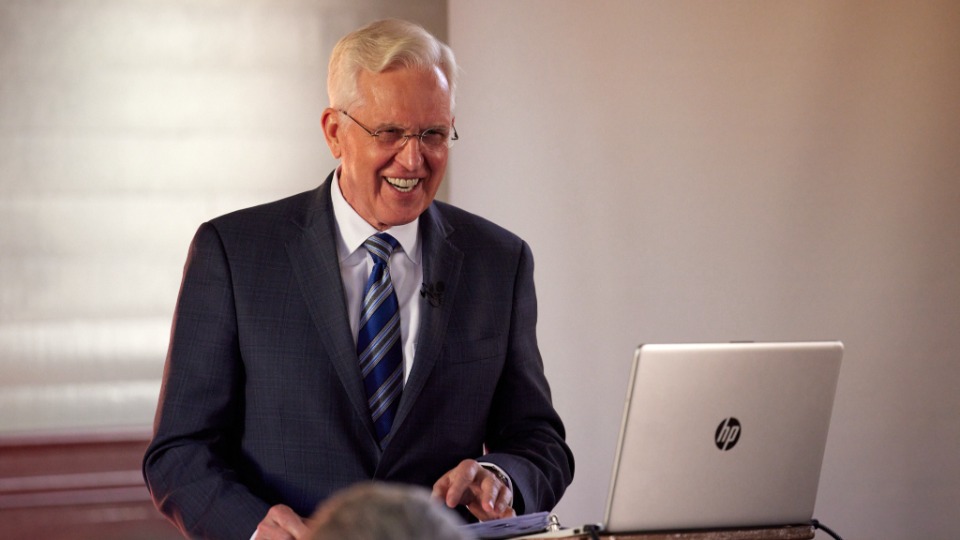
20220128_180558_CBell_CMB_6020.jpg
Elder D. Todd Christofferson of the Quorum of the Twelve Apostles speaks to the Oregon-California Trails Association symposium at Heritage Park in San Diego, California, on Friday, January 28, 2022. 2022 by Intellectual Reserve, Inc. All rights reserved.Elder Christofferson spoke of the Church’s efforts to preserve the more than 26 miles of the Oregon, Mormon Pioneer, California and Pony Express trails that it owns.
“The Church continues to implement measures in hopes of improving our role as stewards and partners in preserving the trail,” he said. “Church property includes some significant trail remnants on the four officially designated historic trails. While it is impossible to preserve the trails in a pristine state forever, we are confident that the management guidelines in place will conserve current conditions, mitigate adverse impacts and restore damaged sections while also allowing visitors to have firsthand experience with the historic trails.”
Trail stories — including those of the Mormon Battalion — continue to “capture the attention and admiration of all Americans,” he said. “As emigrants made their way across the Great Plains and the Rocky Mountains in search of new opportunities, they endured hardships and overcame overwhelming obstacles. Preserving their legacy and telling their story through the trail is a responsibility the Church holds near and dear.”
